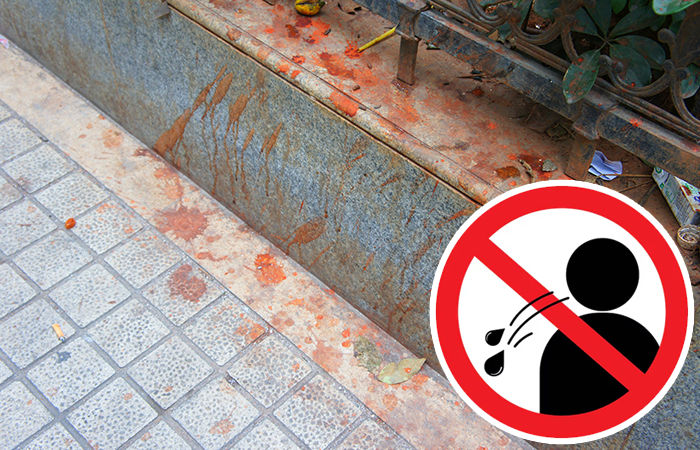A silent epidemic that has chewed upon and engulfed Ahmedabad as a whole is the spitting menace prevalent among tobacco eaters.
The research titled ‘Daily Tobacco Consumption in Adults of Ahmedabad’, conducted by a private university has deduced a probability of the city housing around 30 lakh consumers of edible tobacco products (paan and gutkha).
The study was conducted on 882 people of age groups varying from 15 to 94, who are hooked on consuming the product in the city.
Usually, the study states, 90% of the spitters disseminate the filth from their mouths in intervals of 10 minutes. However, this number could vary on a person-to-person basis.
The study also finds that a tobacco eater consumes ten packets in a day and spits it out thrice in one consumption, translating to 30 spits from an individual every day.
This number coils up to 9 crore daily spits splashed across various parts of the city.
25% of these spitters use the walls of the city’s buildings, staircase corners, and urinals, among other spots, to disperse the waste.
The Amdavad Municipal Corporation (AMC), however, claims to be rigorously monitoring the ‘spit situation’. AMC has devised strict vigilance over such acts through a network of CCTV cameras.
However, the issue of offenders evading the corporation’s eagle eyes and violating the norms in public spaces remains unattended.
A well-known physician in Ahmedabad adds their opinion on this issue, stating, “People who consume tobacco products (paan masala and gutkha) tend to spit more frequently. Such addictions find shelter where an individual seeks some sort of mental stimulation at regular intervals. As they consume tobacco, their salivary glands become active, filling their mouths with saliva, eventually forcing them to spit.”
Further adding to their statement, they opine, “Earlier, when washbasins were not common, spittoons were kept in public places and even at houses. Although spitting publicly is illegal now, people continue to spit in public places without any control over themselves.”
The study establishes that an individual residing in the slums is more likely to spit in public spaces.
Purabiya attributes this liberty to the lack of authoritative vigilance in such spaces. He adds that one submerges into the depths of selfishness in such cases, unable to comprehend another’s concerns.
He finds railway stations, bus stops, as well as airports suffering from the same plight.



